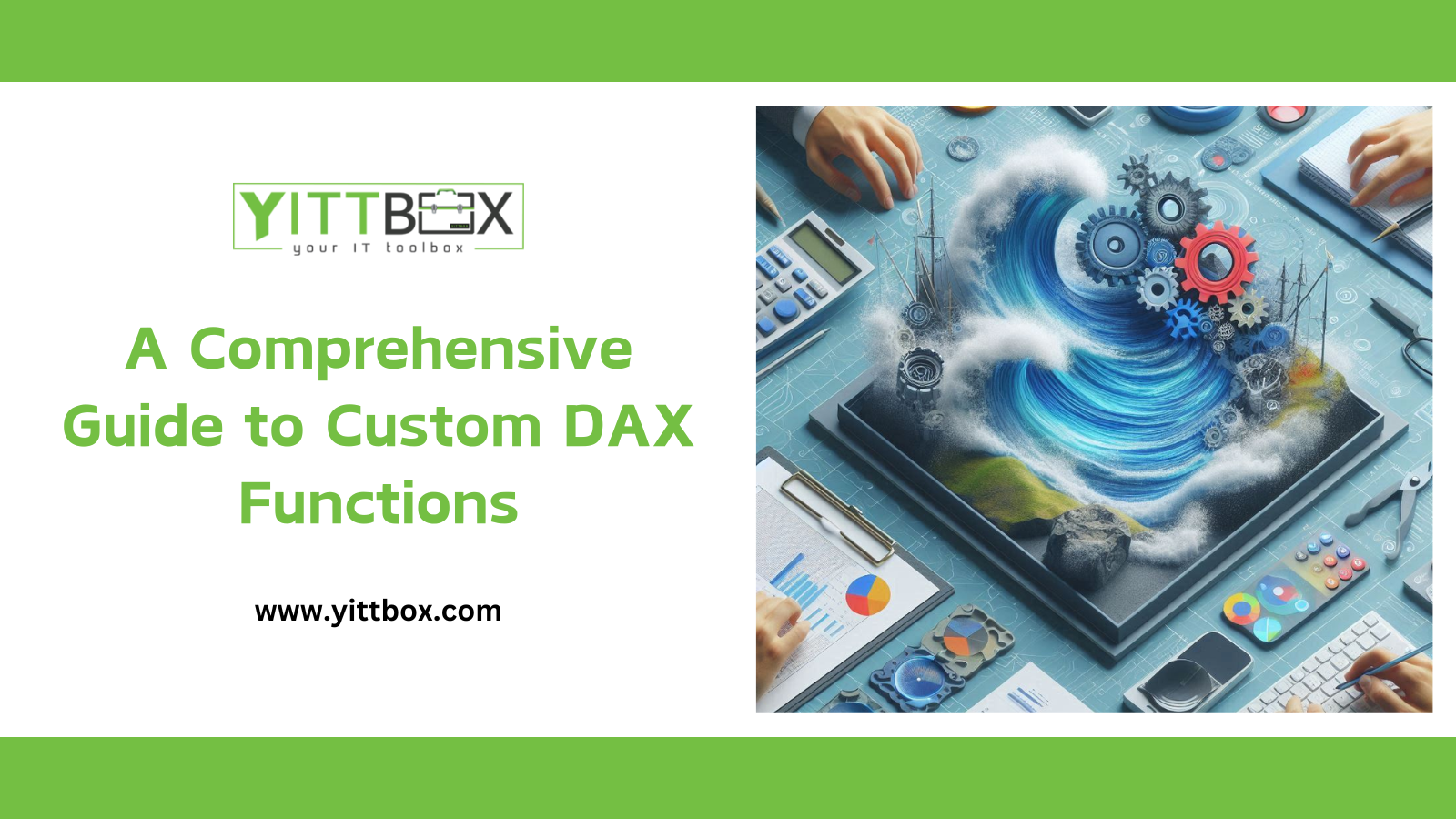Introduction
Power BI has rapidly become one of the most popular business intelligence tools, empowering users to create dynamic dashboards, visualize data, and perform powerful analyses. One of the reasons for its popularity is DAX (Data Analysis Expressions), a collection of functions, operators, and constants that can be used to manipulate data. This blog dives deep into DAX, exploring the creation of custom functions to enhance your Power BI projects.
What is DAX in Power BI?
DAX is a formula language for data modeling, enabling users to perform complex calculations and data analysis. It extends Power BI’s capabilities by allowing users to create new information from data in existing columns.
Why Learn DAX?
- Enhanced Analytical Power: DAX allows for data aggregation and manipulation, providing deeper insights.
- Customization: You can create custom measures and calculated columns to fit your specific needs.
- Performance: Efficient DAX functions optimize your Power BI models, especially when dealing with large data sets.
Getting Started with Basic DAX Syntax
DAX formulas begin with an equals sign and are often used in calculated columns or measures.
Example:
DAX
Total Sales = SUM('Sales'[SalesAmount])
This code calculates the total sales amount by summing up all values in the SalesAmount column of the Sales table. It’s a straightforward example, but understanding it is fundamental for using DAX effectively.
Creating Custom DAX Functions in Power BI
Creating custom DAX functions can save time and add a layer of specificity that generic formulas lack. Let’s walk through a step-by-step example of building a custom DAX function to calculate year-over-year growth.
Step 1: Calculate Total Sales per Year
The first step is to calculate the total sales for each year.
DAX
Total Sales per Year = CALCULATE(SUM('Sales'[SalesAmount]), YEAR('Sales'[Date]) = YEAR(TODAY()))
This formula calculates the total sales amount for the current year by using the CALCULATE function and filters only the data from the current year.
Step 2: Calculate Previous Year Sales
Now, let’s calculate the sales from the previous year.
DAX
Previous Year Sales = CALCULATE(SUM('Sales'[SalesAmount]), YEAR('Sales'[Date]) = YEAR(TODAY()) - 1)
This function is similar to the first but filters to get the sales for the previous year by subtracting one from the current year.
Step 3: Year-Over-Year Growth Calculation
Finally, use the two previous formulas to calculate the growth rate.
DAX
YoY Growth = DIVIDE([Total Sales per Year] - [Previous Year Sales], [Previous Year Sales], 0)
This custom DAX function subtracts the previous year's sales from the current year's and then divides it by the previous year’s sales to get a growth percentage. The DIVIDE function also ensures that if the previous year’s sales are zero, it returns 0 instead of an error.
Applying DAX Functions in Visualizations
Once you have created the custom DAX functions, you can use them in Power BI visualizations to analyze year-over-year growth dynamically. Dragging and dropping these custom measures onto a line or bar chart enables you to quickly see trends over time.
Advanced DAX Techniques: Variables
Using variables within DAX functions can make complex calculations easier to read and faster to execute.
Example:
DAX
YoY Growth with Variables = VAR CurrentYearSales = CALCULATE(SUM('Sales'[SalesAmount]), YEAR('Sales'[Date]) = YEAR(TODAY())) VAR LastYearSales = CALCULATE(SUM('Sales'[SalesAmount]), YEAR('Sales'[Date]) = YEAR(TODAY()) - 1) RETURN DIVIDE(CurrentYearSales - LastYearSales, LastYearSales, 0)
In this example, CurrentYearSales and LastYearSales are stored as variables, and then these variables are used in the final calculation. This method not only makes the code more readable but also optimizes performance in larger data models.
Optimizing Your Power BI Models
Here are some optimization tips for better performance when using DAX:
- Avoid Repeated Calculations: Store values in variables to reduce redundant calculations.
- Filter Carefully: Use functions like
ALL and FILTER to manage data context explicitly.
- Consider Data Granularity: Fine-tune the level of detail in your data to match the needs of your analysis.







